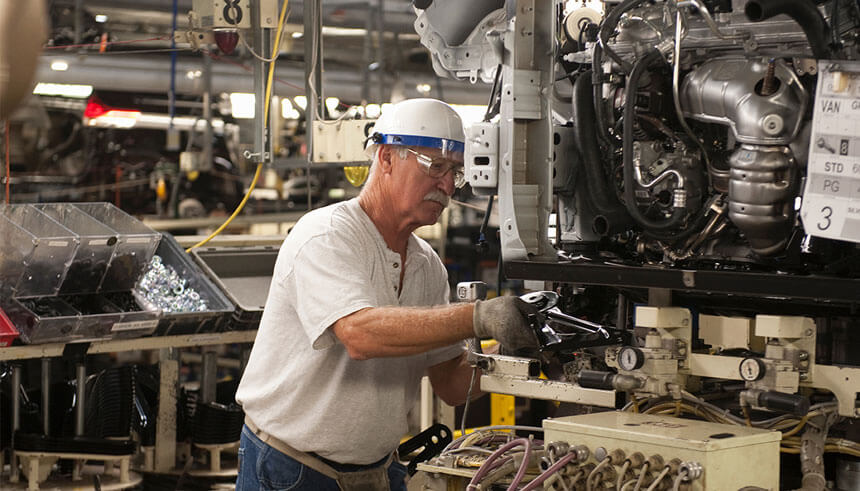U.S.-Asia Business
US-China Market Watch: COVID-19 Manufacturing, Trade Update, Starbucks China
By

Your monthly roundup of the latest US-China business and industry news.
COVID-19 pushes countries to move manufacturing out of China
Major officials from three of the world’s largest economies, including the United States, have said that they want to encourage companies to move manufacturing out of China, with White House National Economic Council Director Larry Kudlow saying that the government would pay the moving costs of all U.S. companies who wanted to do so. Other countries that have talked about moving manufacturing are Japan, which revealed a $2.2 billion fund to bring manufacturers back home, and the European Union.
Although the White House has previously talked about bringing manufacturing back to the United States, the COVID-19 pandemic has accelerated the issue by highlighting the country’s reliance on China-made products, particularly medical supplies. China dominates the personal protective equipment and pharmaceuticals markets, which have become increasingly vital in the wake of the novel coronavirus—70 percent of protective face masks used in the U.S. are made in China.
China was the first country to be hit by COVID-19, but also the first to begin recovery and is now shipping billions of PPE to other countries that are experiencing medical supply shortages. Regulators have loosened export rules to allow for quicker shipping of supplies, which previously required companies to have a license in order to export medical goods. However, although official government records show that China’s economy is resuming, Chinese manufacturers are pessimistic about export demand, with some smaller exporters already seeing a decline in orders.
U.S. puts new tech export restrictions on China
The U.S. imposed new export restrictions on China related to civil aircraft and semiconductor components, which could harm the aviation and semiconductor industries in the U.S. In the new regulations, U.S. companies are required to have licenses to sell certain items to Chinese military entities. Even certain technologies that didn’t before require licenses if being exported to non-military entities now require one.
The U.S. is also eliminating civilian license exceptions for Chinese importers of certain telecommunications equipment, radar and high-end computers. A third proposed rule change would force foreign companies shipping certain U.S. products to China to also require approval from the U.S. government as well as their own governments.
On the other hand, China is following through with phase one of the trade deal and upped its purchases of U.S. agricultural products to protect itself from further supply-chain disruptions caused by the COVID-19 pandemic. On top of the over $5 billion worth of U.S. agricultural products it had imported in the first quarter, China plans to buy an additional 10 million tons of soybeans, 20 million tons of corn and 1 million tons of cotton for its reserves, with the bulk of the purchases expected to come from the United States.
China rolls out digital currency
For the first time, a number of large American chain businesses are taking part in Beijing’s test rollout of a Chinese sovereign digital currency. The People’s Bank of China (PBOC) said that McDonald’s, Subway and Starbucks would test out the currency in “small transactions with local businesses,” along with a number of local businesses like hotels, convenience stores and a gym. Currently, the currency does not have an official name but is referred to as “DCEP” (digital currency electronic payment).
The government had revealed it was rolling out the currency in a pilot program across four cities: Shenzhen, Suzhou, Chengdu and Xiong’an. The PBOC also revealed that the digital currency was being used to cover half of public sector workers’ travel subsidies in the city of Suzhou. The digital currency app reportedly works similarly to other online payments platforms like Alipay and WeChat Pay. Venues for the 2022 Winter Olympics in Beijing are expected to test the digital currency in the future, too, although China has yet to reveal a timetable for the rollout.
Starbucks partners with Sequoia Capital China
Starbucks has struck a partnership with venture capital firm Sequoia Capital China to co-invest in technology companies on the mainland. Starbucks is looking to invest in “next-generation food and retail technology companies” that could give it early access to strategic and innovative technology. The companies that Starbucks and Sequoia Capital China invest in will be able to leverage Starbucks’s “retail expertise, scale and infrastructure.”
The deal comes as part of Starbucks’s digital push in China. In 2018, Starbucks had partnered with Chinese e-commerce giant Alibaba to deliver Starbucks products. The company is also looking into how to adopt digital technology into all aspects of its retail business in China, as well as technology that can help it manage its supply chain and inventory.
U.S. plant-based meat alternatives enter China
With plant-based meat alternatives growing more popular in China, U.S. companies are more and more eager to break into the market. Both Starbucks and KFC have begun selling meat alternatives in China, from Beyond Meat and Cargill, respectively.
Starbucks announced that it was offering three Beyond Meat items to its menu: a Beyond Beef pesto pasta, lasagna and spicy-and-sour wrap. This foray into China marks a major stepping stone for Beyond Meat’s expansion goals—CEO Ethan Brown had said that the company plans on producing its products in Asia by the end of 2020, regardless of COVID-19.
After a successful trial run of its plant-based chicken nuggets at KFC China, U.S. agribusiness Cargill revealed it plans to introduce a variety of plant-based products to China. The initial trial ran for three-day period from April 28 to 30 and were only sold at KFC locations in Shanghai, Guangzhou and Shenzhen.

